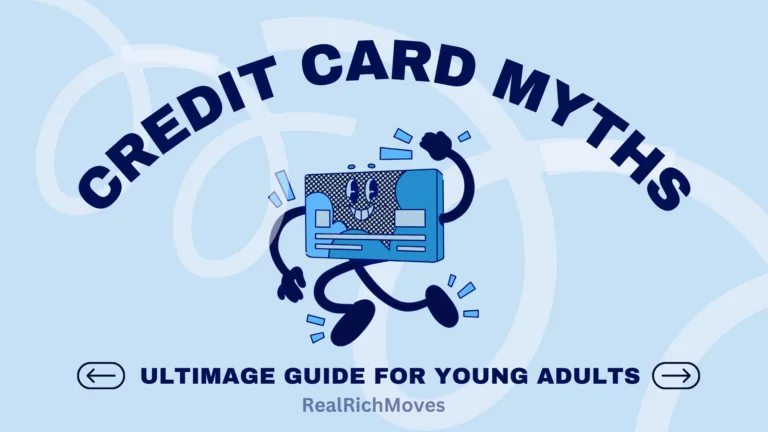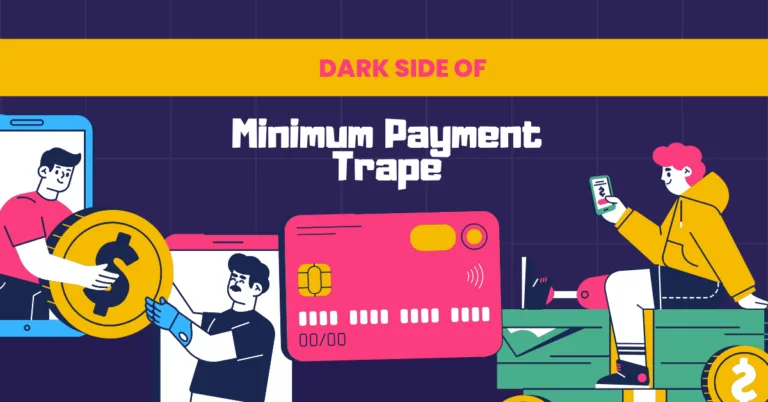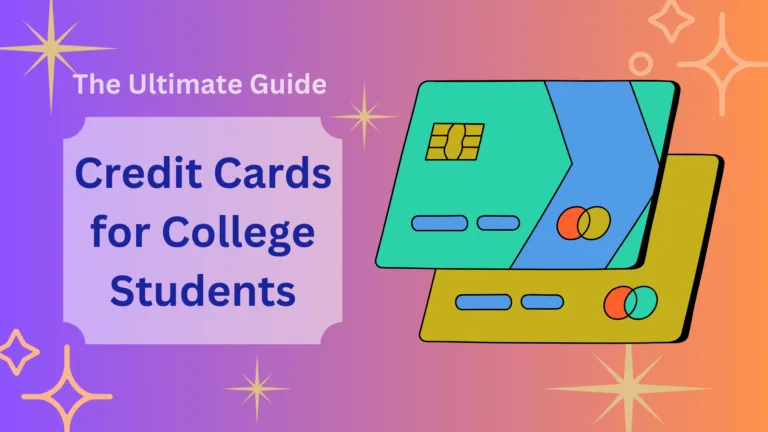Introduction
Hey fam! Let’s talk about something that might sound super complicated, but is actually pretty simple, and is also extremely important for your credit score: credit card utilization. You might have heard people talking about it, but you might not fully understand what it is and why it matters. Today we are demystifying credit card utilization, and helping you understand how you can use this knowledge to build a positive credit history.
You might think that the most important factor in your credit score is paying your bills on time, and yes, that is very important, but credit card utilization is also a huge factor, that will decide what your credit score will actually be. And understanding this concept, is the first step in taking control of your credit score. It is time to understand the real impact of credit card utilization.
This post is your ultimate guide to understanding how credit card utilization works, how it affects your credit score, and also what steps you can take to manage it effectively. Let’s dive in and learn more!
Now that you have some idea about why it is important, let’s discuss the basics of it.
Understanding Credit Card Utilization: The Basics
Okay, let’s start with the fundamentals. What exactly is credit card utilization, and why is it such a big deal? It’s time to get a clear understanding of this core concept to achieve financial freedom.
What is Credit Card Utilization?
Credit card utilization is basically the amount of your available credit that you are actually using. It’s often expressed as a percentage, and it’s calculated by dividing the total amount of your credit card balances by the total amount of your credit limits. And it is one of the most important factors in determining your credit score.
It is a snapshot of how much of your available credit you are actually using at any given time. And it’s also a way to show lenders that you are responsible with your finances. Understanding the basics of credit card utilization is the first step towards a better credit score.
Why Does Credit Utilization Matter?
Credit card utilization is a very important factor that is taken into account by credit bureaus when calculating your credit score, and it determines whether or not you are a responsible credit card user. It can have a significant impact on your credit score, as a high credit utilization will lower your score, and vice versa.
Credit card companies want to see that you are able to manage your debt responsibly and not maxing out all your credit cards. That is why, keeping your credit card utilization low is so important. It’s a key step towards achieving a good credit score, and it is vital for understanding credit card utilization.
Credit Utilization and FICO Score
Your credit utilization plays a major role in your FICO score, which is the most commonly used credit score by lenders. It is actually one of the most significant factors, that impacts your credit score. It is very important to have a clear idea of what your credit utilization is, and how it is impacting your credit score.
You need to focus on keeping your credit utilization low, if you want to build a good FICO score, because that is a signal that you are a responsible borrower. And that is also the key to using a credit card responsibly, and to achieve long term financial freedom. Understanding this link is crucial to understanding credit card utilization.
Now that we understand the basic concepts, let’s explore what all the different credit utilization ranges mean for your credit score.
Okay, so now that we have laid the groundwork, let’s talk about what all the different credit utilization ranges mean for you, and how they impact your credit score. Because understanding all of these numbers is key to managing your credit effectively, and you can also strategically use this knowledge to build a better credit score.
Credit Utilization Ranges and What They Mean for You
Understanding the different credit utilization ranges is very important to help you achieve your credit goals. And knowing the difference between a good and bad utilization rate, is the key to building a positive credit history.
What is a Good Credit Utilization Rate?
A good credit utilization rate is considered to be when you are using less than 30% of your available credit. So if you have a credit limit of $1000, then you should not be carrying a balance of more than $300, to maintain a healthy credit utilization rate. Keeping your credit utilization rate below 30% shows credit card companies that you are responsible with your spending habits.
Experts always recommend that you should keep your credit utilization low, if you are looking to maintain or improve your credit score. So you should make it your goal to keep your credit utilization as low as possible. And this should be a consistent practice to achieve a positive financial history and also to understand all the important aspects of credit card utilization.
Moderate Credit Utilization: What to Expect?
If your credit utilization is between 30% and 50%, then you are having a moderate credit utilization. And while this is not a great score, it is also not extremely harmful, but it also means you are not maximizing your potential to have a positive credit score. It is still okay to fall in this range, but you should try to lower your balance, to improve your score.
This means you need to start taking steps to lower your credit card balances, and to always make smart spending choices. Understanding this range is key to making smarter decisions about your credit score. And it’s also very important to understand the significance of credit card utilization.
High Credit Utilization: A Warning Sign
If you are using more than 50% of your available credit, then you have a high credit utilization, and this is a warning sign that you need to start making changes to your spending habits. High credit utilization has a big negative impact on your credit score. It can be a sign that you are overspending and you are also relying heavily on credit cards, which can lead to debt.
So you should immediately start taking steps to lower your balance. It’s a call for action to make sure you are making smart spending decisions. Understanding the dangers of high credit utilization is the key to managing your credit wisely. And also to avoid all the common Credit Card Myths for Young Adult.
Now that we know all the different ranges, and what they mean, let’s discuss how to manage your credit card utilization effectively.
Alright, so now that you are aware of the importance of credit card utilization and what the different ranges actually mean, let’s talk about some actionable strategies that you can use to manage your credit utilization effectively. It’s all about taking charge of your finances and building a positive credit history.
How to Manage Your Credit Card Utilization Effectively
Managing your credit card utilization is not a difficult task, if you are consistent with your efforts, and if you implement all the steps we are discussing today. So, let’s dive in and explore some actionable steps.
Pay Your Balance in Full (or as Much as Possible)
The most important thing that you can do to lower your credit utilization is to pay your credit card balance in full every month. This way you will avoid paying any interest charges, and you will also ensure that your credit utilization is always low. If you are not able to pay your full balance, then you need to pay as much as you can, to make sure you are at least paying a significant portion of it.
Paying your full balance, or as much as you can every month, is the key to lower your credit utilization and to also maintain a good credit score. Also by doing this, you are also avoiding all those high interest rates. Understanding this, is vital for managing your credit card utilization effectively.
Increase Your Credit Limit
Another way to lower your credit utilization is to request an increase in your credit limit, which means you will be using a smaller portion of your overall credit limit, which will result in a lower credit utilization. If you get a higher credit limit, while your balance remains the same, it will lower your utilization.
You should only request a credit limit increase if you are not going to overspend just because you have more available credit. You need to be honest with yourself, and only request an increase, if you are going to use it responsibly. And this can also be an important step in understanding and managing credit card utilization.
Multiple Credit Cards Strategy
Having multiple credit cards is not always a bad thing, as long as you are managing them responsibly, and you are not overspending. If you spread your credit card balance across multiple cards, it will actually help you lower your credit utilization, as you will be using smaller percentages of your available credit.
If you are using this strategy, you need to make sure that you are not losing track of your spending, and you are also not overspending just because you have more available credit. Using multiple credit cards can help you lower your credit utilization as long as you are managing your finances responsibly.
Time Your Payments Strategically
You can also use a strategy where you make multiple payments throughout the month, and especially before your credit card statement closing date. This will reduce the amount that you are owing at the time your balance is reported to the credit bureaus, and this will also help you lower your credit utilization.
By strategically making payments, you are reducing your credit utilization, and you are showing credit card companies that you are a responsible borrower. And this is a great way to control your credit card utilization effectively.
Now that you have a good idea on how to manage your credit card utilization, let’s see how you can monitor your credit score, and make sure that you are on the right track.
Alright, now that you know how to manage your credit card utilization, let’s talk about how you can keep track of your credit score, and see if you are actually making progress. It’s time to monitor your finances, and make smart decisions for the long term.
Monitoring and Improving Your Credit Score
Monitoring your credit score is a great way to know how well you are managing your credit, and what you need to improve. Let’s get into some practical tips on how to monitor and also improve your credit score.
Monitor Your Credit Report
You should monitor your credit report regularly to make sure all the information is accurate and also to identify any errors or any fraudulent activity. You can get a free copy of your credit report from AnnualCreditReport.com, and it’s recommended to get it at least once a year from all three bureaus (Equifax, Experian, and TransUnion).
It’s extremely important to monitor your credit report to make sure that there are no inaccuracies, as errors can also negatively impact your credit score. So, regular monitoring of your credit report is key to understanding your credit health. And it is also a great way to understand all the aspects of credit card utilization.
Check Your Credit Score Regularly
It’s also recommended that you check your credit score regularly to monitor your progress and also to understand how your actions are impacting your credit score. There are many online tools that you can use to check your credit score, without hurting it. You need to understand the trend of your credit score, and if you are building positive credit habits.
By tracking your credit score regularly, you will be able to see the impact of all your financial decisions, and it will also help you in determining if your efforts are paying off. Checking your credit score is vital to understand all the key concepts of credit card utilization.
Avoid Overspending
Always avoid overspending, and also try to stick to your budget. Overspending can lead to high credit card balances, and that will negatively impact your credit utilization. It also leads to a debt cycle, and it will be very difficult for you to maintain a healthy credit score. So, always make sure you are spending within your means.
You should always avoid overspending at all cost, as it is one of the major causes of high credit utilization, and it also shows that you are not a responsible borrower. So be mindful of your spending habits. And that will help you avoid a lot of financial troubles, and it will also lead to having a better understanding of credit card utilization.
We’ve covered a lot of information today, and now it’s time to wrap it all up, and give you some final thoughts.
Okay, fam, we’ve reached the end, and I hope you now understand the reality of credit card utilization and how it impacts your credit score. And that you will now be able to make smart financial choices to maintain a good credit score.
Conclusion: Credit Utilization is Key, Take Control!
Let’s recap: credit utilization is the amount of your available credit that you are using, and it has a huge impact on your credit score. A low utilization rate will increase your credit score, while a high utilization rate will lower it. To manage your credit utilization, you should always pay your balance in full every month, increase your credit limit, time your payments strategically and avoid overspending.
Understanding and managing your credit card utilization is essential for your financial health, and I hope that by following all the steps mentioned in this guide, you will take control of your finances and build a positive credit history.
Ready to improve your credit score and take control of your finances? Sign up for our free newsletter for more financial tips! Also check out our blog post about credit scores, to learn more about building your credit.
Share this post with a friend who needs to understand credit card utilization.







